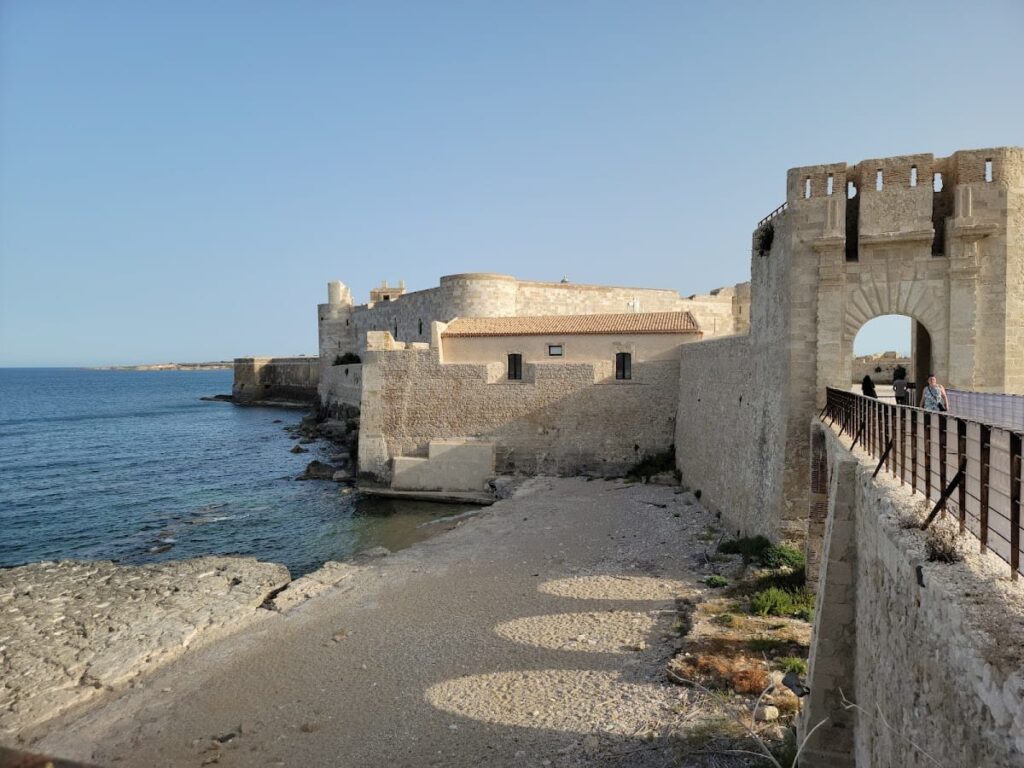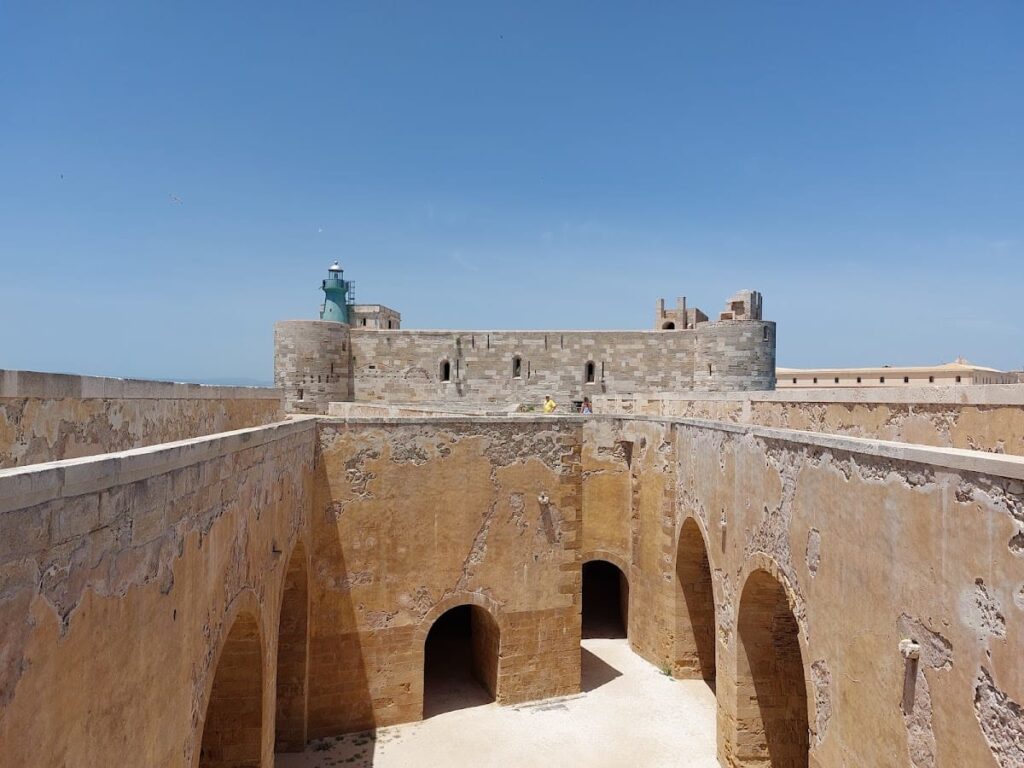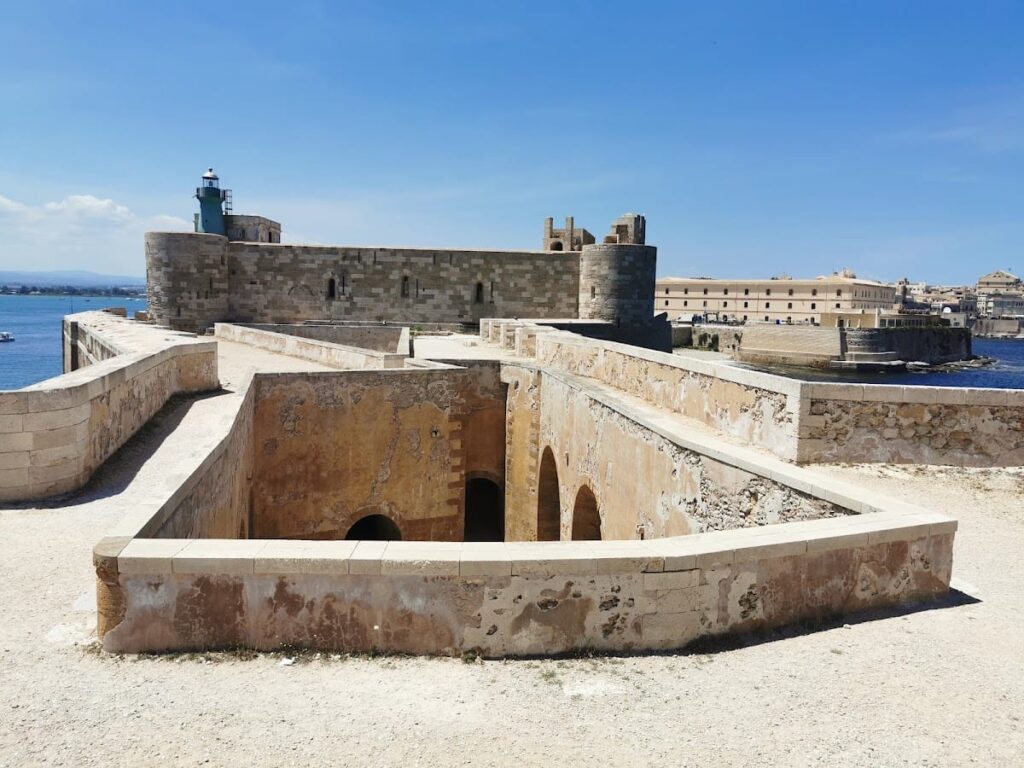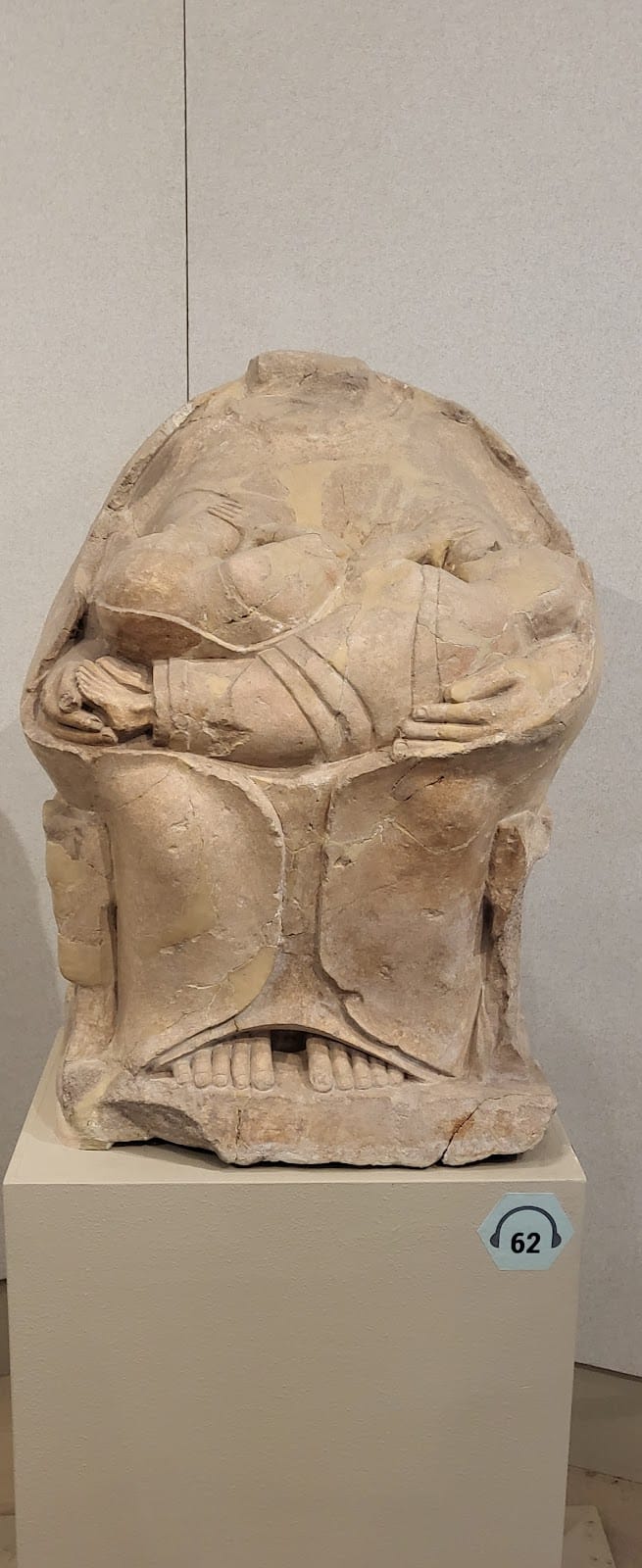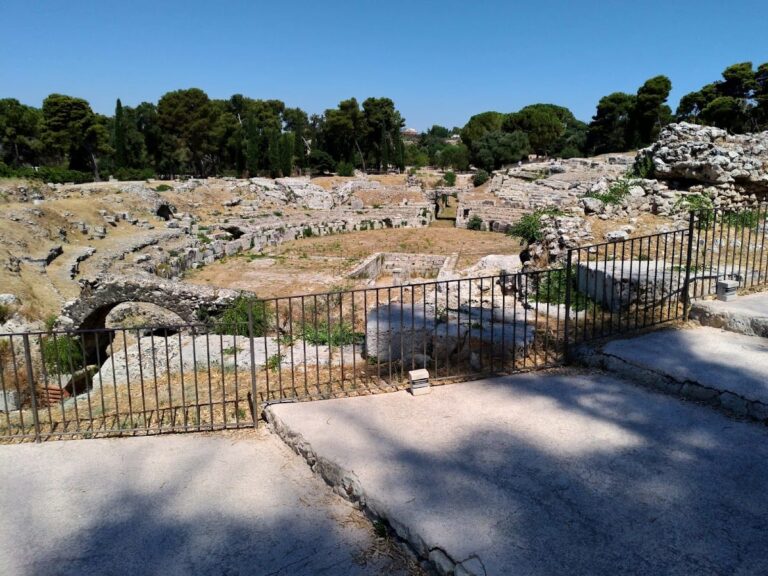Castello Maniace: A Historic Fortress in Syracuse, Italy
Visitor Information
Google Rating: 4.4
Popularity: Medium
Google Maps: View on Google Maps
Official Website: www.comune.siracusa.it
Country: Italy
Civilization: Medieval European
Remains: Military
History
Castello Maniace stands at the southern tip of Ortigia, the historic heart of Syracuse, Italy. Its name honors the Byzantine commander George Maniakes, who briefly retook Syracuse in 1038. Maniakes likely began fortifying the site to protect the Great Harbor during his campaign. Although the area later fell under Arab control until 1087, no visible remains of Byzantine or Arab fortifications survive today.
The present castle was built between 1232 and 1239 by Emperor Frederick II of the Hohenstaufen dynasty. Designed by architect Riccardo da Lentini soon after Frederick’s return from the Crusades, it shares design features with other Hohenstaufen castles in Sicily and southern Italy. The castle passed to the Angevins in 1266 and was seized by rebellious Syracusans during the Sicilian Vespers uprising in 1282. In 1302, Frederick of Aragon used the castle to sign a truce with the Angevins.
In 1321, Frederick III of Sicily convened the Sicilian parliament at the castle to confirm his son Peter II’s succession. Peter II improved the defenses by renovating the moats and adding two supporting forts in 1325. From 1305 to 1536, under Aragonese rule, the castle served as the residence of the Camera Reginale, housing queens such as Costanza, Maria, Bianca d’Evreux, and Germana de Foix. It became a center of baronial revolts, culminating in 1448 when Alfonso the Magnanimous sent Giovanni Ventimiglia to suppress the rebels. Ventimiglia was awarded two bronze rams, said to have been brought from Constantinople and linked to Maniakes, which were later placed on his tomb.
By the 15th century, the castle’s role as a royal residence declined, and it was mainly used as a prison. After 1535, Viceroy Ferdinando Gonzaga commissioned military engineer Ferramolino da Bergamo to strengthen the castle against artillery attacks, using stones taken from ancient monuments. In 1540, Admiral Andrea Doria stayed at the castle during Emperor Charles V’s campaign against Muslim forces. The castle suffered earthquake damage in 1542 and 1693. In 1704, lightning struck the powder magazine, causing a massive explosion that destroyed watchtowers, collapsed a floor, and killed 33 Spanish soldiers, leaving the castle partly ruined.
In the early 17th century, under Castellan Joan de Roca Maldonato, the castle was decorated with the imperial shield of Charles V and symbols of the Spanish Empire above the main entrance. These included the columns of Hercules and globes representing Iberian world dominion. The castle’s name was officially changed to “Jago de Maniace” (Saint James of Maniace), and its four corner towers were renamed after saints: San Pedro, San Catalina, San Philipe, and Santa Lucia. During the 17th century, Flemish military architect Carlos de Grunembergh added the diamond-shaped Forte della Vignazza at the promontory’s tip.
Under Bourbon rule, the castle regained military importance. It was armed with artillery and further fortified in 1838 amid regional unrest. The castle remained a military installation through World War II. Around the year 2000, it was restored and demilitarized, later reopening for cultural events and official gatherings.
Remains
Castello Maniace has a massive square layout, measuring about 51 meters on each side and standing roughly 12 meters tall today. Originally, its walls reached around 18 meters in height and were about 3.5 meters thick. Four cylindrical corner towers with octagonal bases are integrated into the structure, providing defensive strength.
The main entrance faces Ortigia and is accessed through the former Abela barracks gate in Piazza Federico di Svevia. Visitors pass through a courtyard and cross a masonry bridge with a 16th-century Spanish-era portal featuring side columns. This bridge replaced the original wooden drawbridge that once spanned a wide moat connecting the Great Harbor to the open sea. The moat was filled in during the 16th century.
The castle’s marble portal, though worn and damaged, still displays small marble columns with hooked leaf capitals between the outer jambs and inner pillars. Four zoomorphic figures—two lions and two hippogriffs—are visible, likely carrying symbolic meaning. Floral motifs decorate the lower arch and archivolt. Above the ogival (pointed) portal arch sits a 17th-century imperial coat of arms.
Inside, the main hall features 24 rib-vaulted bays with pointed arches, plus a central bay symbolizing the kingdoms under Frederick II, with Sicily at the center. The vaulted ceiling includes richly sculpted capitals, some preserved, which are unique in medieval secular architecture around the Mediterranean. The rib patterns show influence from Cistercian architecture, particularly from Clairvaux Abbey. A small niche on the eastern side resembles an Islamic prayer niche, though its purpose remains unclear.
Originally, the castle had one or two upper floors, giving it a tall, tower-like appearance. These upper levels were removed during Spanish rule to reduce vulnerability to cannon fire, resulting in the current broader and lower profile. Many stone blocks bear inscriptions indicating their quarry of origin or the workers responsible, aiding in identification and payment.
In June 2018, a Staufer stele commemorating Emperor Frederick II was installed to the left of the castle entrance. The castle’s strategic position at Ortigia’s southern tip allowed it to defend the entrance to Syracuse’s harbor effectively.
